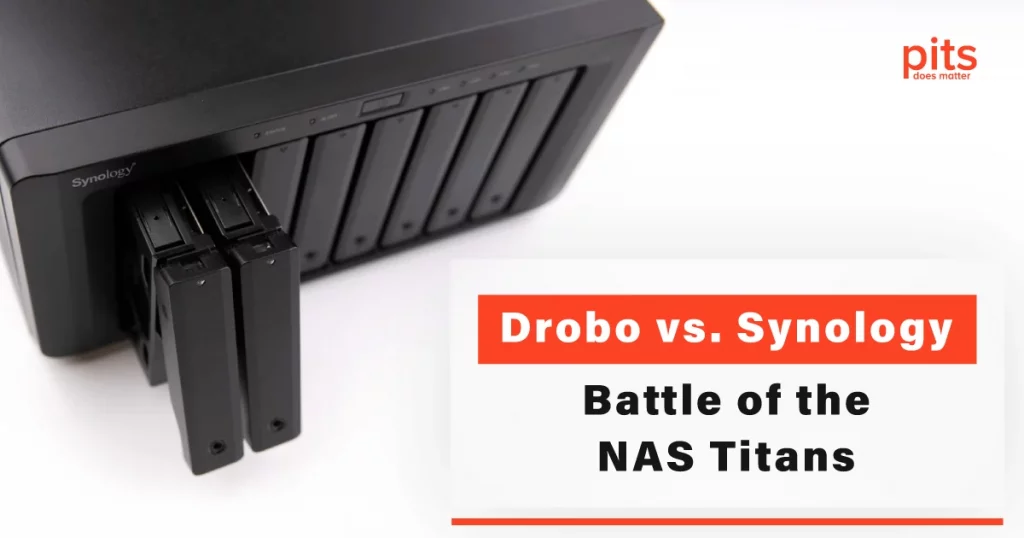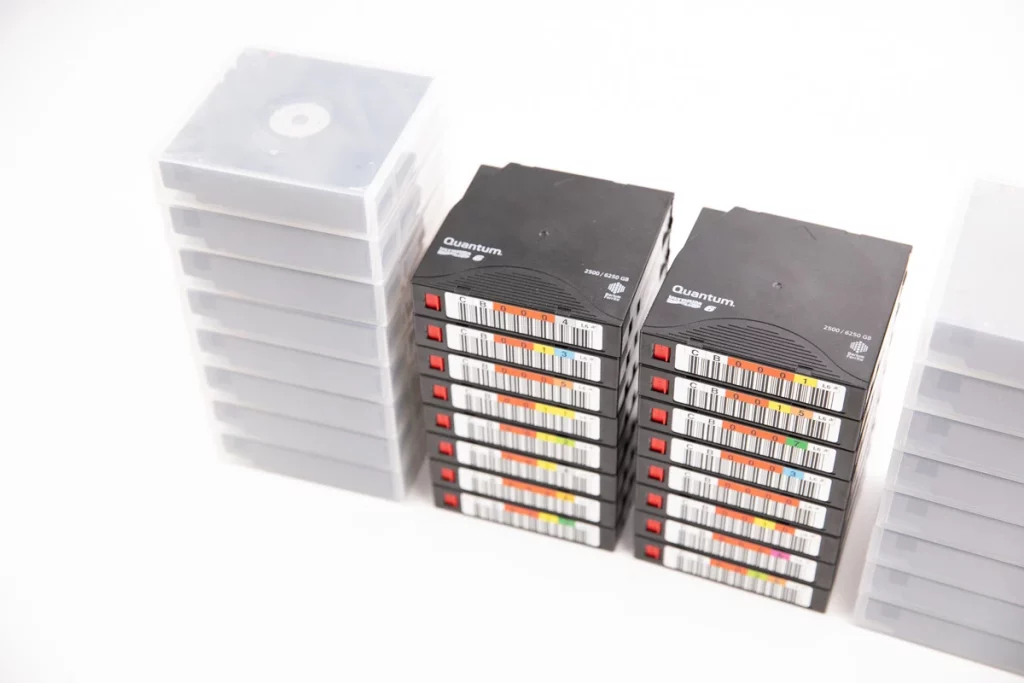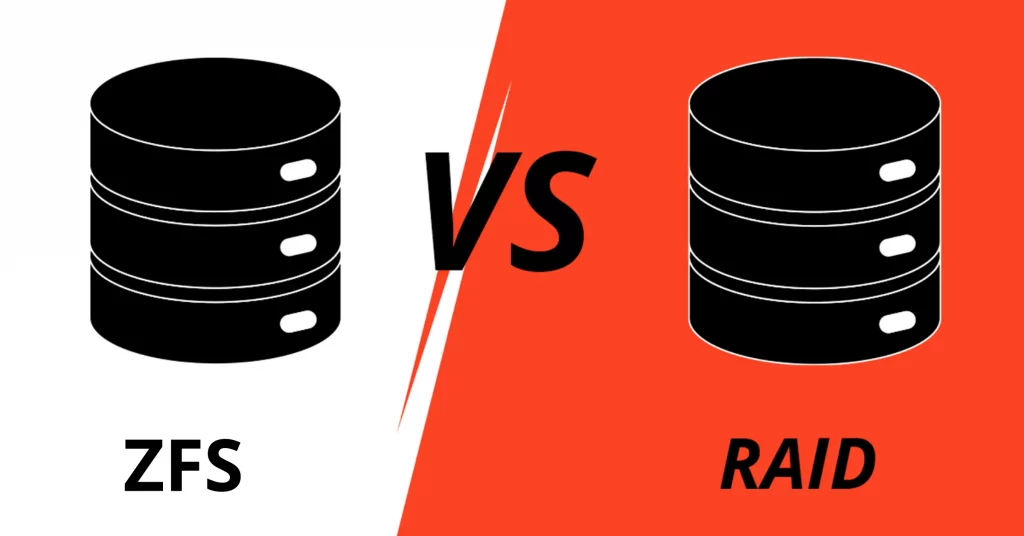In the ever-evolving world of data storage and management, Network Attached Storage (NAS) devices have become indispensable tools for individuals and businesses alike. Two prominent contenders in the NAS arena, Drobo and Synology, have been vying for supremacy. In this comprehensive comparison, we will delve into the intricacies of these NAS powerhouses, examining their NAS devices, RAID configurations, file systems, user interfaces, and more. By the end of this article, you will have a clear understanding of which one suits your needs better.
NAS Devices Overview
Both Drobo and Synology offer a range of NAS devices tailored to different user requirements.
Drobo NAS: Drobo is renowned for its innovative approach to NAS. Their devices are known for their simplicity and flexibility. Drobo’s lineup includes the Drobo 5N2 and Drobo 8D, among others. They are designed to be user-friendly, making them an excellent choice for beginners.
Synology NAS: Synology, on the other hand, offers a vast selection of NAS devices, ranging from the budget-friendly DS120j to the high-performance DS3617xs. Synology’s extensive range caters to a wide audience, from home users to enterprises, ensuring a NAS device fits every need.
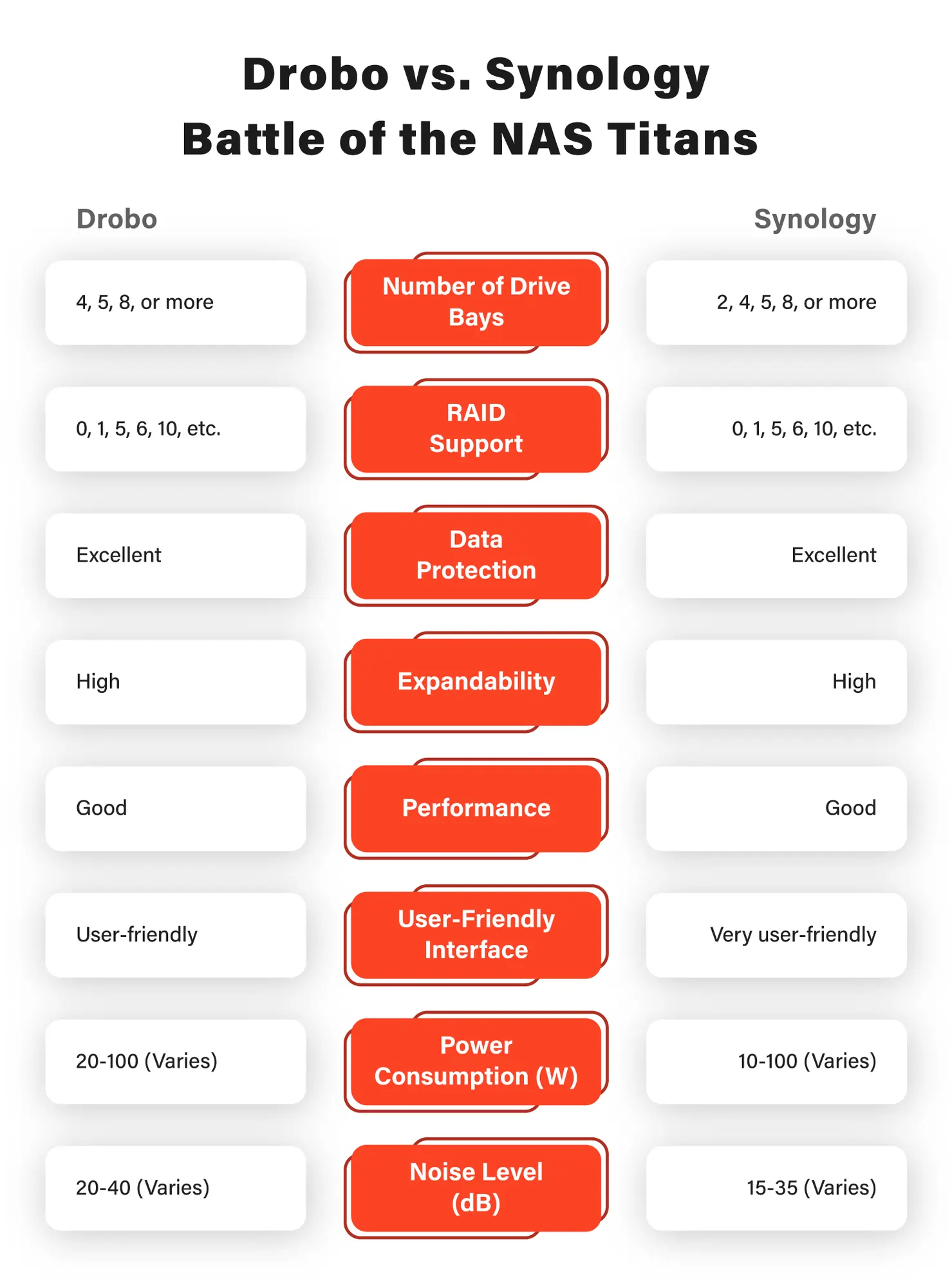
RAID Configurations: Traditional vs. Proprietary
RAID configurations are crucial for data redundancy and performance optimization. Let’s compare the RAID configurations offered by Drobo and Synology.
Drobo RAID: Drobo employs a proprietary RAID technology known as BeyondRAID. BeyondRAID is designed to simplify the RAID setup process, allowing users to mix and match different drive capacities without the complexity of traditional RAID configurations. This flexibility is excellent for novice users who may be intimidated by configuring RAID arrays manually.

Synology RAID: Synology offers a more traditional approach to RAID configurations, allowing users to choose from RAID 0, 1, 5, 6, and 10, among others. This traditional RAID setup provides greater control over the configuration but may require more technical expertise to set up correctly.
File Systems and Data Management
File systems play a crucial role in NAS devices, as they determine how data is stored and accessed.
Drobo File Systems: Drobo NAS devices primarily use the BeyondRAID file system. BeyondRAID is known for its data protection features, including automatic data balancing and drive failure protection. This system is user-friendly, but some users may find it less flexible when it comes to advanced data management.
Synology File Systems: Synology uses the BTRFS and EXT4 file systems for some of its models. Btrfs offers advanced data management features such as snapshot support, data integrity checks, and enhanced scalability, making Synology a strong contender for users who require robust data management capabilities.
User Interface: DSM DiskStation Manager vs. Drobo Dashboard
The user interface of a NAS device is critical for ease of use and efficient management.
DSM DiskStation Manager (Synology): Synology’s DSM is known for its intuitive and user-friendly design. It offers a web-based operating system that allows users to manage their NAS devices easily. DSM comes with a wide range of applications for various tasks, including multimedia streaming, data backup, and more. It even supports third-party applications through its Package Center.
Drobo Dashboard: Drobo’s user interface, known as Drobo Dashboard, is also web-based and straightforward. It offers essential features for managing your Drobo NAS device, but it may lack some of the advanced functionalities found in DSM.
User-Friendly and Accessibility
Both Drobo and Synology aim to provide user-friendly solutions for NAS users.
Drobo NAS: Drobo’s simplicity and BeyondRAID technology make it an excellent choice for users who want a plug-and-play experience. The ease of expanding storage by simply adding or upgrading drives is a notable advantage.
Synology NAS: Synology offers a more extensive ecosystem of apps and add-ons, making it a versatile choice for users who want to do more with their NAS. However, this can make the initial setup a bit more complex for newcomers.
Additional Features: Synology's Time Machine and Cloud Storage
Synology offers some additional features that may sway your decision.
Time Machine Support: Synology NAS devices provide native Time Machine support for Mac users. This means you can easily back up your Mac devices to your Synology NAS, ensuring your data is safe and recoverable.
Cloud Storage Integration: Synology offers seamless integration with various cloud storage providers, allowing users to back up their NAS data to the cloud and access it from anywhere. This is a valuable feature for users who require offsite backups and remote access to their data.
In the Drobo vs. Synology showdown, the right choice ultimately depends on your specific needs and preferences.
Choose Drobo if
- You are a beginner looking for a straightforward NAS experience.
- Simplicity and ease of use are your top priorities.
- You want a NAS device that supports mixed drive capacities without manual RAID configuration.
Choose Synology if
- You require advanced data management capabilities and a wide range of apps.
- Time Machine support for Mac backups is essential.
- Cloud storage integration and remote access are crucial for your workflow.
Both Drobo and Synology have their strengths, and both are reputable brands in the NAS market. Before making your decision, consider your current and future storage needs, your technical expertise, and the specific features that align with your goals. Whichever you choose, you will be investing in a powerful tool to streamline your data storage and management.
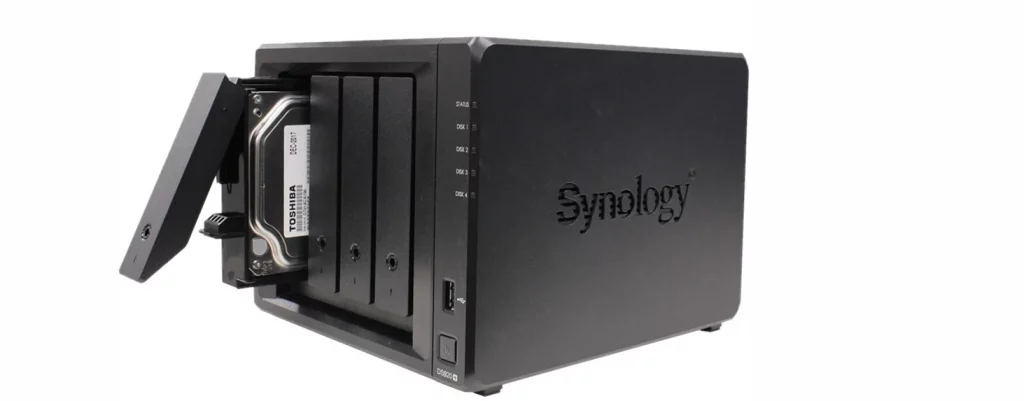
Frequently Asked Questions
What is the main difference between Drobo and Synology NAS devices?
Drobo typically offers a simpler, user-friendly experience with proprietary RAID, while Synology provides a more feature-rich and customizable environment with traditional RAID configurations.
Which NAS is better for beginners, Drobo or Synology?
Drobo is often preferred by beginners due to its intuitive interface and BeyondRAID technology. Synology, while more versatile, may have a steeper learning curve for newcomers.
Can I integrate Drobo and Synology with cloud storage services?
Yes, both Drobo and Synology support cloud integration, allowing you to back up and synchronize your data with various cloud storage providers, enhancing data security and accessibility.
Which NAS is ideal for Mac users looking for Time Machine backups?
Both Drobo and Synology support Time Machine backups, making them suitable choices for Mac users. Synology, however, offers its own cloud service, Synology C2, for seamless integration.
